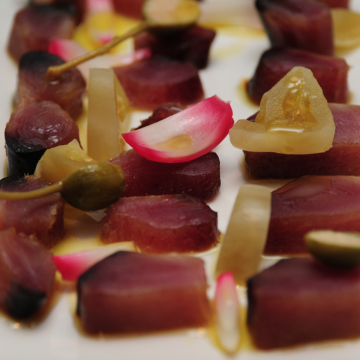
Foto: deniacreative.city
SALTING is one of the oldest known forms of fish conservation.
Its origin dates back to the 4th century b.c. when in pre-Roman times they salted fish and let them dry in the sun as a method of conservation.
Since ancient times the same process of elaboration is still maintained so we are dealing with traditional and exclusive products of the Mediterranean Diet. The most traditional on the Costa Blanca are mojama, roe, bonito, anchovy, cod and chaplain.
Although their most common consumption is in appetizers, they are also used as salad ingredients, in rice, or in dishes such as potato stew, sheep, pebrereta, or pericana.
The salting can be prepared in two ways: either dry or remaining immersed in brine for a specific period.
The most characteristic salting is that of TUNA. From it comes the mojama, the roe and for those who know how to appreciate it, the "bull" and the "budellet" (the belly of tuna).
Perhaps the salting that requires the longest processing time is that of ANCHOVY. This requires removing the belly and head to the anchovies and covering them with salt in a container for a month or so, where they with their juice make their own brine. After this period of time, take them out and put them in a bowl again to cover them with new salt and some of the juice of the brine they have produced. Cover the container well. They can last between three months and a year.
In any case any salting requires your technique and better to consult someone expert in the matter.

